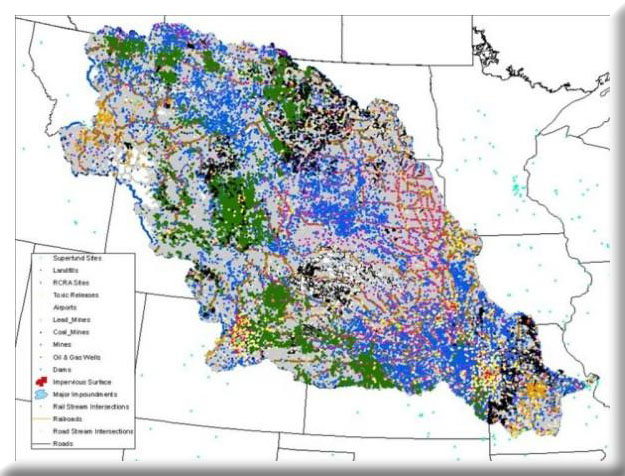
Objectives
- Quantify threats to aquatic ecological integrity for the drainage area above each stream reach throughout the Missouri River Basin.
- Quantify NRCS conservation practices for the drainage area above each stream reach throughout the Missouri River Basin.
- Establish relationships between conservation practice effects on stressors, stressor effects on fish species, and conservation practice effects on fish species.
- Quantify the influence of NRCS conservation practices on fish species or guilds.
Threats to freshwater biodiversity are primarily driven by large-scale, private agriculture production and human modification of the landscape. As private land holdings account for approximately 70% of land ownership in the United States (US), management of these lands is integral to the success of freshwater biodiversity conservation. The US Department of Agriculture’s Natural Resource Conservation Service is largely responsible for interacting with private land managers in agricultural settings and, through Farm Bill legislation and funding, has the ability to encourage the implementation of large-scale conservation measures on private lands. Until recently, it has not been possible to evaluate the Natural Resource Conservation Services’ conservation practices to determine their success at conserving aquatic biota. The goal of this project is to assess the effectiveness of the United States Department of Agriculture’s Natural Resource Conservation Service conservation practices at conserving flowing-water (lotic) fish assemblages throughout the Missouri River Basin.
